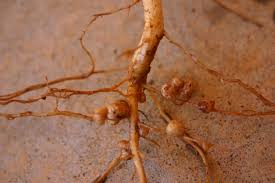According to NASA, the total composition of air in the earth’s atmosphere consists of 78% nitrogen gas, 21% of oxygen, 0.93% argon, 0.04% carbon dioxide, and small amounts of other gases. Many cellular components are also made up of nitrogen. Despite all of it, the concentration of a usable form of nitrogen is very less. Nitrogen gas is vital but a limiting element. All organisms including humans, plants, and other organisms, demand nitrogen for their daily cellular activities.
There is a huge demand for nitrogen gas. Now the question is, how does the environment meet all these demands? Let us learn about nitrogen fixation in detail.
What is Nitrogen Fixation?
Nitrogen fixation is the essential biological process and the initial stage of the nitrogen cycle. In this process, nitrogen in the atmosphere is converted into ammonia (another form of nitrogen) by certain bacterial species like Rhizobium, Azotobacter, etc. and by other natural phenomena.
Recommended Video:

Different Ways of Nitrogen Fixation
Plants are the main source of food. The nutrients obtained from plants are synthesized by plants using various elements which they obtain from the atmosphere as well as from the soil. This group of elements includes nitrogen as well. Plants obtain nitrogen from the soil and utilise it in the process of protein synthesis. Unlike carbon dioxide and oxygen, atmospheric nitrogen cannot be obtained through the stomata of leaves. Because the nitrogen gas present in the atmosphere can not be directly used by plants. There are certain bacteria and some natural phenomenon that help in Nitrogen fixation.
Biological Nitrogen Fixation
Certain bacteria or prokaryotes are capable of converting atmospheric nitrogen to ammonia. This process is called biological nitrogen fixation. The enzyme nitrogenase converts dinitrogen to ammonia. Nitrogen-fixing bacteria may be free-living or symbiotic. Some of the free-living nitrogen fixers are Azotobacter, Beijernickia, Rhodospirillum, cyanobacteria, etc. Examples of symbiotic nitrogen fixers are Rhizobium (in the root nodules of legumes) and Frankia (in the root nodules of non-leguminous plants), etc.
Symbiotic Nitrogen Fixation
A species of bacteria called Rhizobium, help in nitrogen fixation. These bacteria live in the roots of leguminous plants (e.g., pea and beans plants) and using certain types of enzymes, they help in fixing nitrogen in the soil. During this biological process, they convert the non-absorbable nitrogen form into a usable form. This form of nitrogen gets dissolved in the soil, and plants absorb the modified nitrogen from the soil. This is the reason behind farmers implementing crop rotation, where leguminous plants help to replenish nitrogen content in the soil without the necessity of fertilizers.
Nitrogen fixation by bacteria is an example of the symbiotic relationship between Rhizobium and leguminous plants. While bacteria fix nitrogen in the soil, plants provide them food.

Legume Root Nodules
Also check: Non-symbiotic Nitrogen Fixation
Nitrogen Fixation by Lightning
Another process that helps in nitrogen fixation is lightning. It is a natural phenomenon where the energy of lightning breaks and converts the non-absorbable form of nitrogen into a usable form. Even though the contribution of lightning in the nitrogen fixation is small, they save plants from the deficiency of essential elements.
 Natural Phenomenon -Lightning
Natural Phenomenon -Lightning
Nitrogen oxides, e.g. NO, N2O and NO2 are also produced in the atmosphere by industrial processes, automobile exhausts, power stations and forest fires.
Nitrogen Metabolism
Metabolism is a set of chemical processes, which is carried out to convert substances into usable energy forms. Nitrogen metabolism is mainly based on the recycling of ammonia (NH3) into the neutral or charged form ammonium ion (NH4+). The main part of nitrogen metabolism is the Nitrogen Cycle.
Important Questions on Nitrogen Fixation And Nitrogen Metabolism
- What is Denitrification?
Denitrification is the process of converting or reducing the nitrates back into inert nitrogen gas. The process is carried out during the absence of oxygen by bacterial species such as Clostridium and Pseudomonas.
- What is Nitrogen Fixation?
Nitrogen Fixation is a biological process in which the nitrogen gas is converted into a usable form for plants and other microbes. In this process, nitrogen gas present in the atmosphere is converted into ammonia and other related nitrogenous compounds.
- What is the importance of nitrogen?
Nitrogen is an important component of all life. It is a major constituent of biomolecules such as proteins, nucleic acids It forms other cellular constituents too which are essential for all forms of life.
- Nitrogen-fixing organisms which can be free as well as symbiotic is?
Plants cannot use atmospheric nitrogen. Some of the nitrogen-fixing bacteria convert atmospheric nitrogen into ammonia making it available to plants. Anabaena is a free-living nitrogen-fixing bacteria. These entities are also known to form a symbiotic relationship with the plants such as mosquito fern. Existing as plankton, these are known to form symbiotic associations with the Azolla, aquatic fern. Consequently, these are symbiotic bacteria too.
Stay tuned with BYJU’S to learn more about Nitrogen fixation, Nitrogen metabolism and other related topics at BYJU’S Biology

Thank You so much!! Helped me a lot
Byju,s is best class